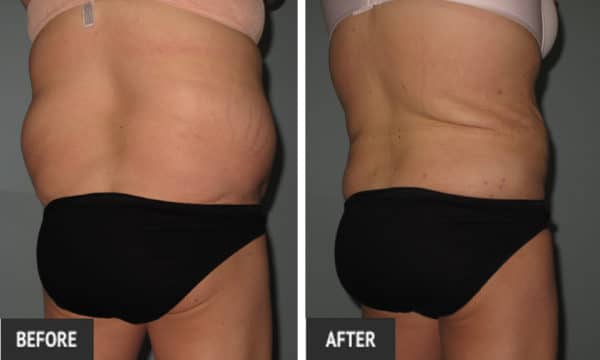If you are considering liposuction, you probably have many questions. One of the main things people ask about is the difference between laser liposuction vs. tumescent liposuction.
Tumescent Liposuction
This liposuction technique has been around for nearly two decades. It has been shown that it gives the surgeon performing the procedure a high level of control of the amount of fat being removed.
The tumescent procedure involves the injection of a “tumescent” solution that includes a painkiller and a fat dissolving agent. After the solution takes effect, small cannulas are inserted into the treatment area to extract the fat using a gentle suction process.
Laser/Ultrasound Liposuction
The laser liposuction technique is relatively new. Depending upon which laser technique is used, suction may or may not be used to remove the fat. During the laser liposuction procedure, a small cannula is inserted into the treatment area. This cannula has a small laser attached that will emit laser to essentially “melt” the fat. After the fat is liquefied by the laser, it will either be drained away or it will be gently removed through a suction process.
The laser procedure is considered to be often gentler than the older lipo techniques due to the smaller cannulas used. Additionally, laser liposuction will often increase skin tightening through natural skin contraction.
Radio Frequency Liposuction
The Radio Frequency [Assisted] liposuction, or RFALipo, is the newest type of liposuction. It also uses a smaller cannula to deliver Radio wave energy to the fat and surrounding tissue. This assist with the removal of the fat and also causes significant skin tightening. To put how significant the skin tightening is with Radio Frequency Liposuction into perspective. Tumescent Liposuction and traditional liposuction result in an average 8-10% skin surface contraction. Laser Assisted Laser Liposuction or laser liposuction results in an average of 15% skin surface contraction after the procedure. However, RFALipo or Radio Frequency assisted liposuction results in an average of 35% skin surface area contraction after the procedure. This is close to the skin contraction seen with an open surgery that requires a large scar.
The RFALipo is the best liposuction technique if skin tightening is need after the liposuction. It is also gentler than traditional liposuction.
Other Differences
Other differences between the two techniques include the fact that laser liposuction and Radio Frequency Liposuction can be used in smaller, more delicate areas such as the face, chin, and neck. Additionally, the recovery time between the two procedures can be different, although neither requires a lengthy recovery time. If you’ve also previously had liposuction with botched results, consider reading more about revision liposuction.
Choosing the Best Technique for You
When you make the decision to undergo liposuction, it is best that you understand each type, as well as know exactly the results you desire. Dr. Thomas Wright says, “It is important that expectations of the patient are addressed. That’s why we feel it is important that our patients understand exactly what results can be expected through the different types of liposuction.”
When you are ready to take the important step to undergo liposuction, we invite you to schedule a complimentary consultation. Dr. Wright and his staff will sit down with you to discuss your individual situation. We will talk about your various options that can be used to achieve your goals.

